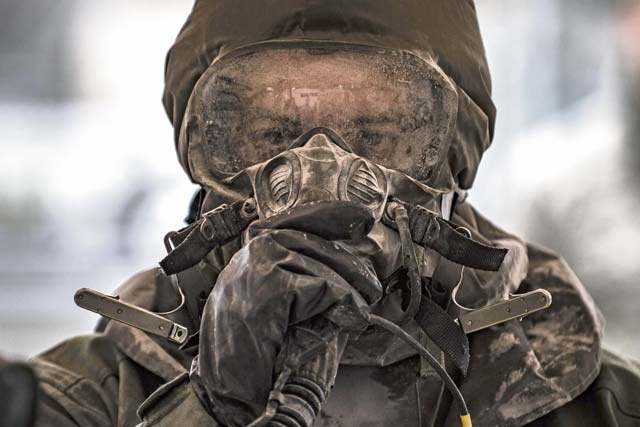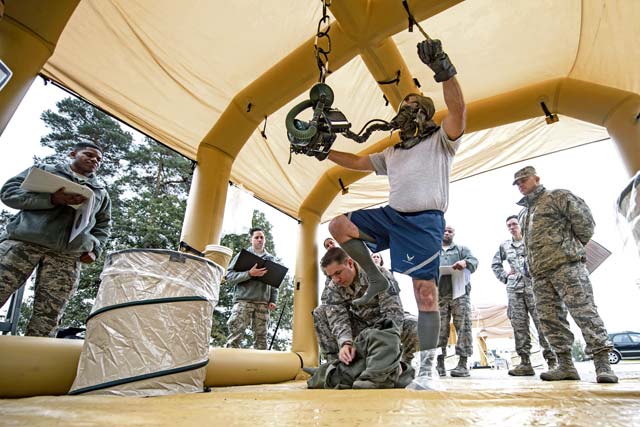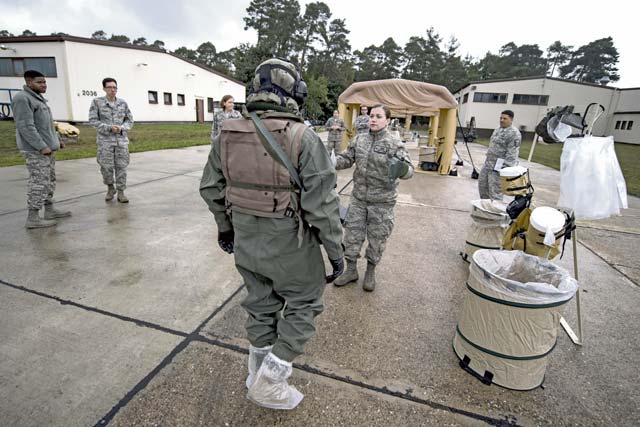
Air Combat Command Aircrew Flight Equipment instructors assigned to the 436th Training Squadron at Dyess Air Force Base, Texas, trained U.S. Air Forces in Europe AFE Airmen on Ramstein Sept. 19 to prepare for the upcoming NATO Toxic Trip in Geilenkirchen.
Toxic Trip is an exercise hosting 13 NATO allies working together to standardize the decontamination process in the event of a chemical attack or exposure to chemical agents.
The USAFE Airmen took a five-day-long course to learn the processes before Toxic Trip, while earning credits for their Community College of the Air Force degree.
During the course, AFE Airmen learned how to carefully remove external equipment while decontaminating them after simulated exposure to chemical agents.
In the event chemicals contaminate aircrew members, AFE Airmen will respond immediately to set up a decontamination line.
“Your responsibility is to get somewhere within 72 hours, have that line stood up and be capable of processing numbers safely anywhere in the world,” said Master Sgt. Michael Doane, 436th TRS ACC AFE instructor. “The importance of it is to know what you’re doing before you go so that you don’t need training when you get there.”
This is the first time the course has been held in a location other than Dyess AFB.
“This is the only Aircrew Contamination Mitigation course in the Air Force,” said Master Sgt. Daniel Tripalei, 436th TRS ACC AFE instructor. “Rather than sending (thirteen) people to Dyess, they send two of us out here and it helps everybody.”
Bringing the course to Ramstein saved the Air Force roughly $24,000 in travel expenses, but that’s not the only benefit of this course.
Airmen who usually work with flight equipment specific to cargo planes were given the chance to work with Joint Strike Fighter F-35A Lightning II equipment.
Since AFE can work on any air frame, Doane said it’s important for AFE Airmen to know how to deal with the equipment specific to aircraft outside of their current mission.









